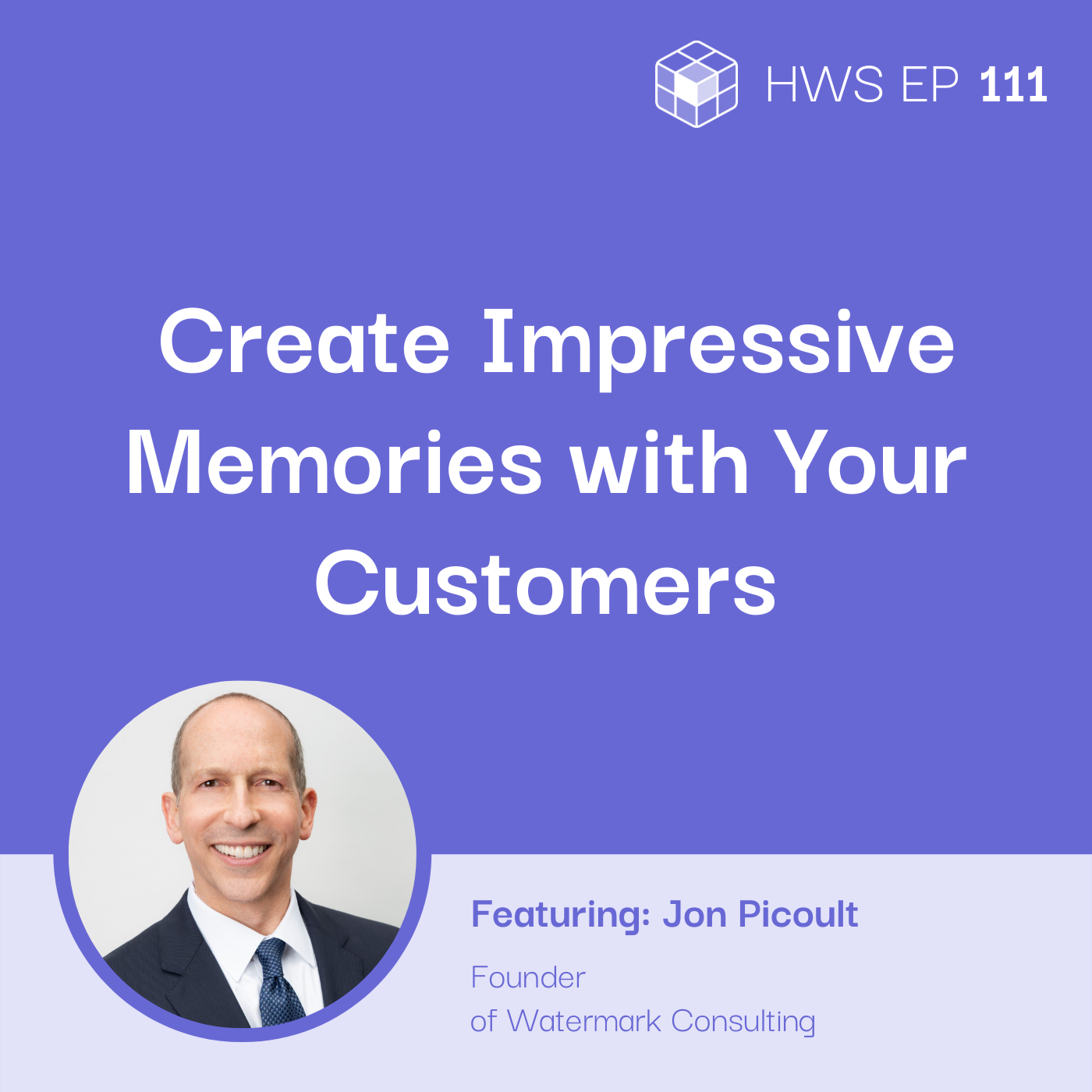Listen on:
Table of Contents:
Problem: How to craft your customer experience to create lifelong fans for you and your organization
Building customer loyalty requires leaving indelible positive impressions on everyone you work with―not just shaping their experiences but also their memories. How do you craft a customer experience that can turn your customers, employees, and any other constituency into lifelong fans for you and your organization?
I like to describe a great customer experience as like a beautifully choreographed performance. And the reason I like that analogy is because, if you think about it, what do you want to do with your customers, your employees, or anyone that your business serves? You want them at the end of the interaction to be like an audience in a theater that rises to their feet, applauds in admiration as you shout for an encore. Then, once they leave the theater, they just can’t help but tell other people about the performance that they just witnessed. That’s the goal. And so, the idea of fans, I think, really evokes that kind of impression that we should all be trying to leave on anyone that we do business with.”
Create Impressive Memories with Your Customers
Customer experiences rely on what kind of memory or impression you left with them. Often, the experience customers have with a company or brand is what makes them return, more than the quality of products and services. Business leaders should work hard to stand out from their competitive market by creating an impressive memory with their customers. Businesses who succeed in doing this can gain the long-term support of their customers.
The whole idea of the impression and the memory that you leave on people is a critical part of customer experience. Because if you think about it, it’s how we recall that show or that business interaction. It’s that recollection that’s really going to drive our repurchase and referral behavior. That’s really what it comes down to. And so why I like the word “impress” because this really is about leaving an indelible impression on the minds of the people that you’re serving.”
Step # 1: Embrace a Broad Definition of What a Customer Means
Consider a broader definition of a customer. A customer is not only someone willing to pay for your products and services but also those who deliver those goods and services. Employees play an essential role because how they feel about their work reflects their customer interactions. And employees can win more loyal customers if they are dedicated workers in the business.
The first step is really to embrace this broad definition of all of the different players that really constitute a type of customer for you, and making sure that you’re being thoughtful about understanding what makes them tick, what are they trying to get out of the relationship with you? What are their basic needs, their hopes, their aspirations, and how can you then create an experience for them that’s going to resonate strongly and leave that incredibly positive impression on them.”
Step #2: Focus on Shaping Memories, Not Just Experiences
The key to a successful business is etching favorable memories in the minds of your customers. Once you’ve recognized that your customer is anyone that your business interacts with, you can work towards knowing what makes them happy and impressed and strategically execute plans to shape their memories. No business is perfect, and there may be days that the goods and services you’ve delivered are not in their best condition. But if you manage to turn it into a positive experience, the customers will remember how you make them feel, which can supersede a flawed transaction.
Great companies, the ones that really do this so well, they recognize that they’re not just in the business of shaping experiences. They’re in the business of shaping memories and people’s perceptions. With the objective being that people walk away from the interaction and they remember all the goodness of it the stuff that was just neutral average or maybe even below average kind of melts from their recollections and evaporates. That is the holy grail of customer experience design.”
Step # 3: Finish Strong
Great marketers leverage the psychological phenomenon Recency Bias to shape the memories of their customers, effectively gaining their loyalty by focusing on making the latest interaction memorable. When asked about their experience, customers remember the last interaction. Every customer experience should be excellent from the very beginning. However, it is the last interaction that clients will remember, so it is important to end on a high note.
It’s really based on a psychological principle called recency bias, which essentially means that we tend to remember the last thing that happens to us in an interaction. We remember it much better than any other part. And it actually exerts a disproportionate influence on our overall perceptions of the interaction.”
Step # 4: Give Customers the perception of control.
Part of creating impressive memories with customers is giving them the perception of control. The perception of control provides a limited set of choices where they can exert some decisions and judgment, and they feel like they’re shaping the experience around them. Another way is to set their expectations to have a clear view of how the business process will flow.
It’s the idea that we as human beings like to be in control of our surroundings and what’s going on in our lives. And if we encounter an interaction where we feel like we’re not in complete control, we just get less comfortable with that experience.”
Step # 5: Stir Emotions
Associating the memory with positive emotions or mitigating negative feelings such as fear, doubts, and anxiety can provide an impressive memory for customers. Incorporating emotional resonance is an effective persuasion technique to reach different goals—brand awareness, more sales, and customer retention, among other things.
Emotion is a really powerful driver behind our perceptions and our recollections. And so whether it’s feeling the peace of mind, feeling like part of a community mitigating anxiety or worry whatever it is, if there is an emotional valence to the interaction, it has the opportunity to either elevate the experience and really catapult your business to success.”
Jon Picoult Recommends These Resources
- Learn more about the principles of turning customers and employees into lifelong fans in the book From Impressed to Obsessed.
This interview is part of the How We Solve podcast. To hear more from industry experts who are solving everyday business problems, check us out on Spotify, Apple Podcasts, and on our website.
About the guest

Jon Picoult
Jon Picoult, the founder of Watermark Consulting is a renowned expert in customer experience. He helps businesses create raving fans that drive business growth by impressing their customers and inspiring employees. A number of media outlets have featured his insights, including The Wall Street Journal, The New York Times, Harvard Business Review, and Forbes.com (where he regularly contributes). His new book, “From Impressed to Obsessed: 12 Principles for Turning Customers and Employees into Lifelong Fans,” debuted as an Amazon #1 New Release in its category.
How people can people reach Jon:
Official Website: Watermark Consulting
Twitter: @JonPicoult
LinkedIn: Jon Picoult
Listen on:
